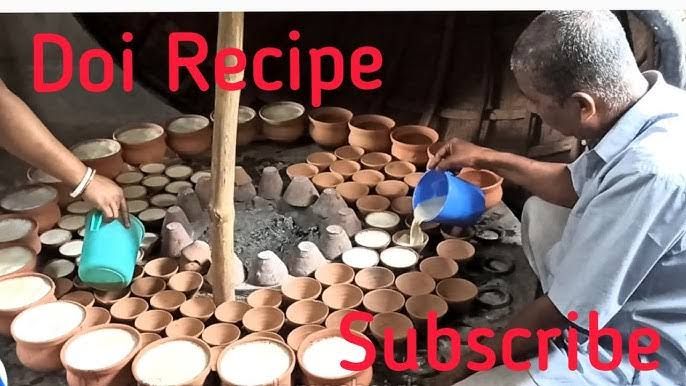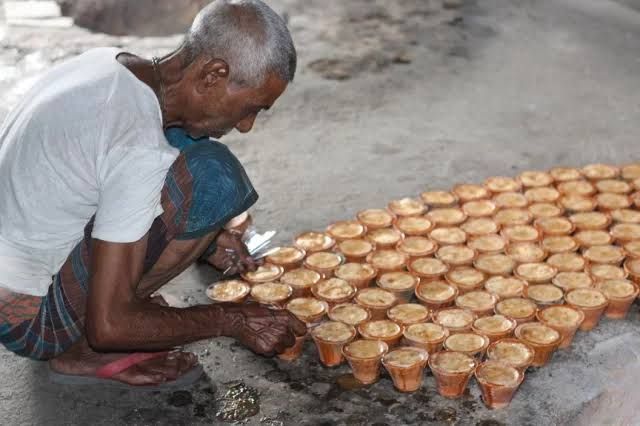
Bismillaher Rahmanir Rahim.
Assalamu Alaikum Wa Rahmatullahi Wa Barakatuhu
Dear Companions Today I want to share with you some words about the evils of killing foetuses.Welcom to this post and congratulations to all
Yogurt, often called curd, is a popular dairy product created by fermenting milk using specific bacterial cultures. The process transforms milk into a tangy, creamy substance rich in probiotics, which are beneficial for gut health. Let’s discuss in detail the process of making yogurt, its nutritional value, cultural significance, and export potential.
- How Yogurt (Curd) is Made
The process of making yogurt involves a series of steps to ensure optimal fermentation and achieve the desired taste and texture.
Milk Selection: Any milk can be used to make yogurt, but the most commonly used types are cow’s milk, buffalo milk, and goat’s milk. In some cases, skim or full-fat milk is used, depending on the desired fat content.
Heating the Milk: The milk is typically heated to around 180°F (82°C). This step helps to denature the proteins in milk, giving the yogurt a smooth and thick consistency. Heating also eliminates unwanted bacteria and prepares the milk for fermentation.
Cooling the Milk: After heating, the milk is allowed to cool down to about 110°F (43°C), which is the optimal temperature for bacterial fermentation. Cooling prevents the bacterial cultures from dying off due to high heat.

source
Adding Bacterial Culture: The cooled milk is then inoculated with live bacterial cultures, mainly Lactobacillus bulgaricus and Streptococcus thermophilus. These bacteria feed on the lactose in milk, converting it into lactic acid, which coagulates the proteins and thickens the milk, transforming it into yogurt. The lactic acid also provides yogurt’s characteristic tangy flavor.
Fermentation: The milk mixture is kept at a warm temperature, ideally between 100–110°F (38–43°C), for 4–12 hours. The duration of fermentation determines the yogurt's thickness and sourness; longer fermentation yields a thicker, tangier yogurt.
Refrigeration: After fermentation, the yogurt is cooled in a refrigerator to halt bacterial activity, prevent over-fermentation, and allow the flavors to settle.
- Nutritional Value of Curd (Yogurt)
Curd is packed with essential nutrients that provide numerous health benefits. The nutritional content can vary based on the type of milk used and the fat content, but here’s a breakdown of the general nutritional profile per 100 grams of plain yogurt:
Calories: Around 61 calories (for low-fat yogurt)
Protein: Approximately 3.5 grams
Fat: 1.5 grams (low-fat yogurt)
Carbohydrates: 4.7 grams (mostly lactose, which is broken down by fermentation)
Calcium: 121 mg (12% of the daily recommended intake)
Vitamin B12: 0.37 mcg (15% of daily recommended intake)
Vitamin B2 (Riboflavin): 0.14 mg (10% of daily recommended intake)
Probiotics: Rich in live bacteria beneficial for gut health
Yogurt is also a good source of magnesium, potassium, phosphorus, and Vitamin D (if fortified). Its probiotics support digestion, improve immune response, and help maintain a balanced gut microbiome. The protein content aids in muscle repair and satiety, while calcium strengthens bones.
- Cultural Significance and Popularity of Curd
Curd is widely consumed around the world, but it holds particular cultural significance and popularity in regions such as South Asia, the Middle East, and Mediterranean countries.
South Asia: Curd is especially popular in countries like India, Pakistan, Bangladesh, and Nepal. In India, curd plays an essential role in traditional cuisine and is also used in religious rituals. Dishes like raita, lassi, and kadhi incorporate curd, while it is often consumed plain or with a dash of sugar or salt.
Middle East and Mediterranean: In Turkey, Greece, and other Middle Eastern countries, yogurt is a staple ingredient in dishes like tzatziki and used as a base for various sauces.
Western Countries: Yogurt has become increasingly popular in Western countries, where it’s often consumed as a breakfast food or snack, sweetened with fruit or honey, or added to smoothies. Greek yogurt, known for its thicker consistency and high protein content, is especially favored.
- Export Potential of Curd (Yogurt)
Curd is a perishable product with a relatively short shelf life, which presents challenges for export. However, technological advancements in refrigeration, packaging, and preservation have expanded its export potential. Many countries have successfully tapped into the international yogurt market:
Export Markets: Greece, Turkey, and France are notable exporters of yogurt. Greek yogurt, in particular, has seen a surge in global demand due to its thicker texture and higher protein content.
Packaging for Export: To extend shelf life, companies often package yogurt in airtight containers and use refrigeration. Some even use vacuum-sealed packaging or add live bacterial cultures that act as natural preservatives.
Logistics and Regulations: Exporting yogurt requires meeting stringent food safety and quality standards. Compliance with import regulations in countries like the United States, Canada, and European nations is essential, as these countries often require specific certifications.
Emerging Markets: As consumer interest in probiotic-rich and health-promoting foods grows, there is an increasing demand for yogurt in regions like Asia and South America. The demand for plant-based or lactose-free yogurt alternatives has also opened new export opportunities for dairy and non-dairy yogurt products.
source
Yogurt, or curd, is a nutritious dairy product that has been cherished for centuries for its health benefits and versatility. From its traditional roots in South Asia and the Middle East to its rising popularity in the Western world, yogurt is consumed globally in various forms. While its short shelf life initially limited its export potential, improvements in preservation, packaging, and logistics have allowed yogurt to reach international markets, fulfilling the demand for this health-promoting food worldwide.



